Albuquerque's Tent City Ordeal
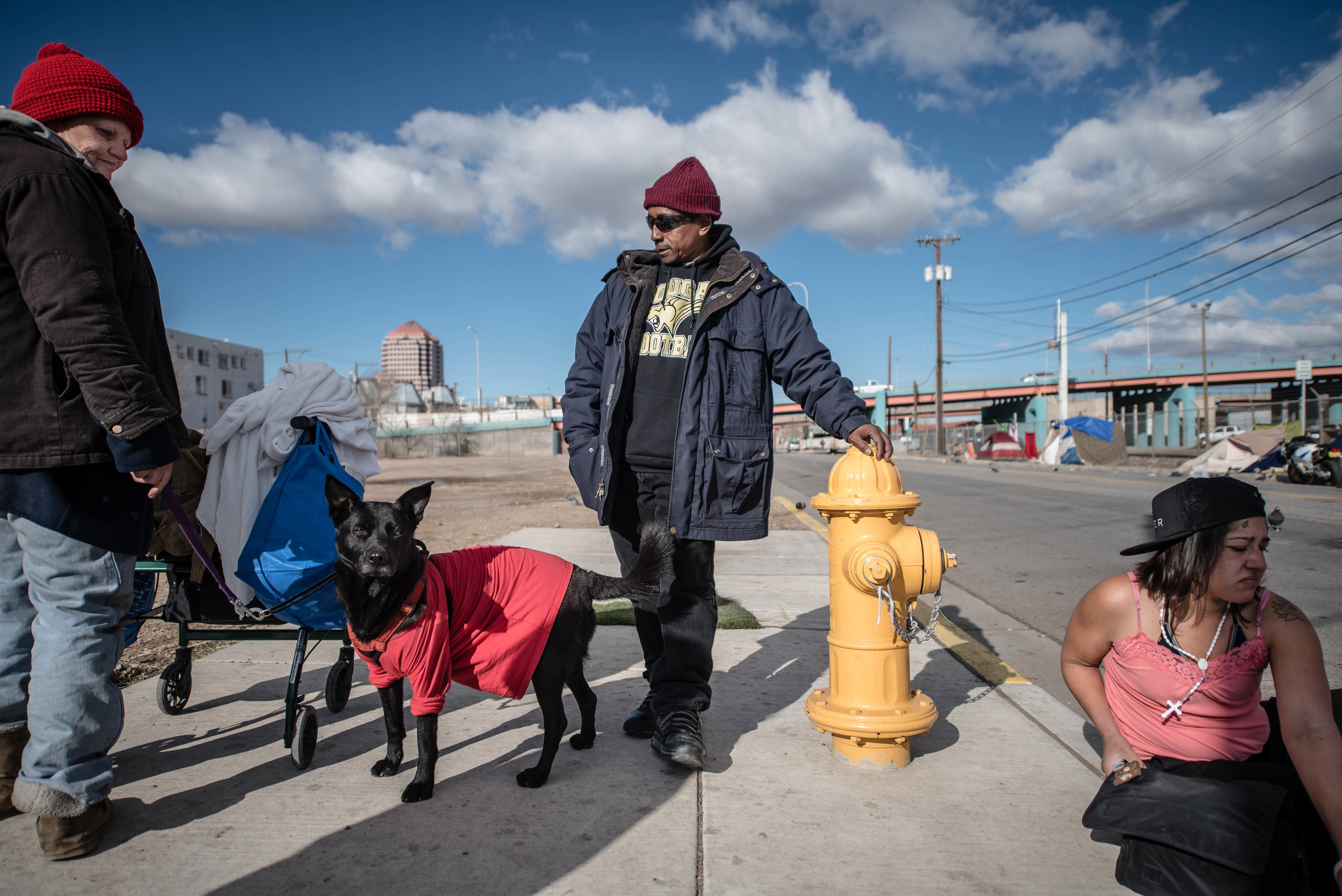
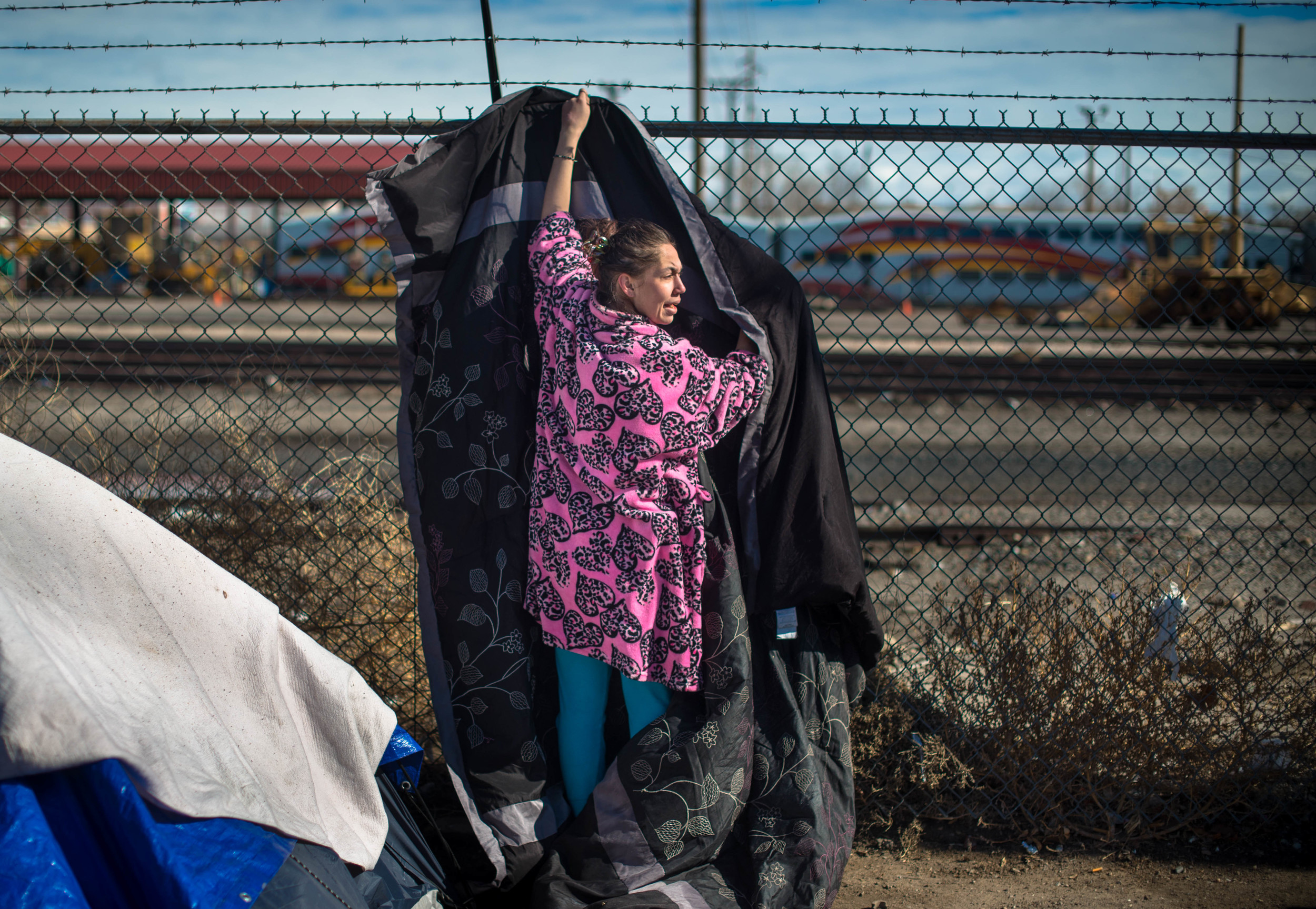

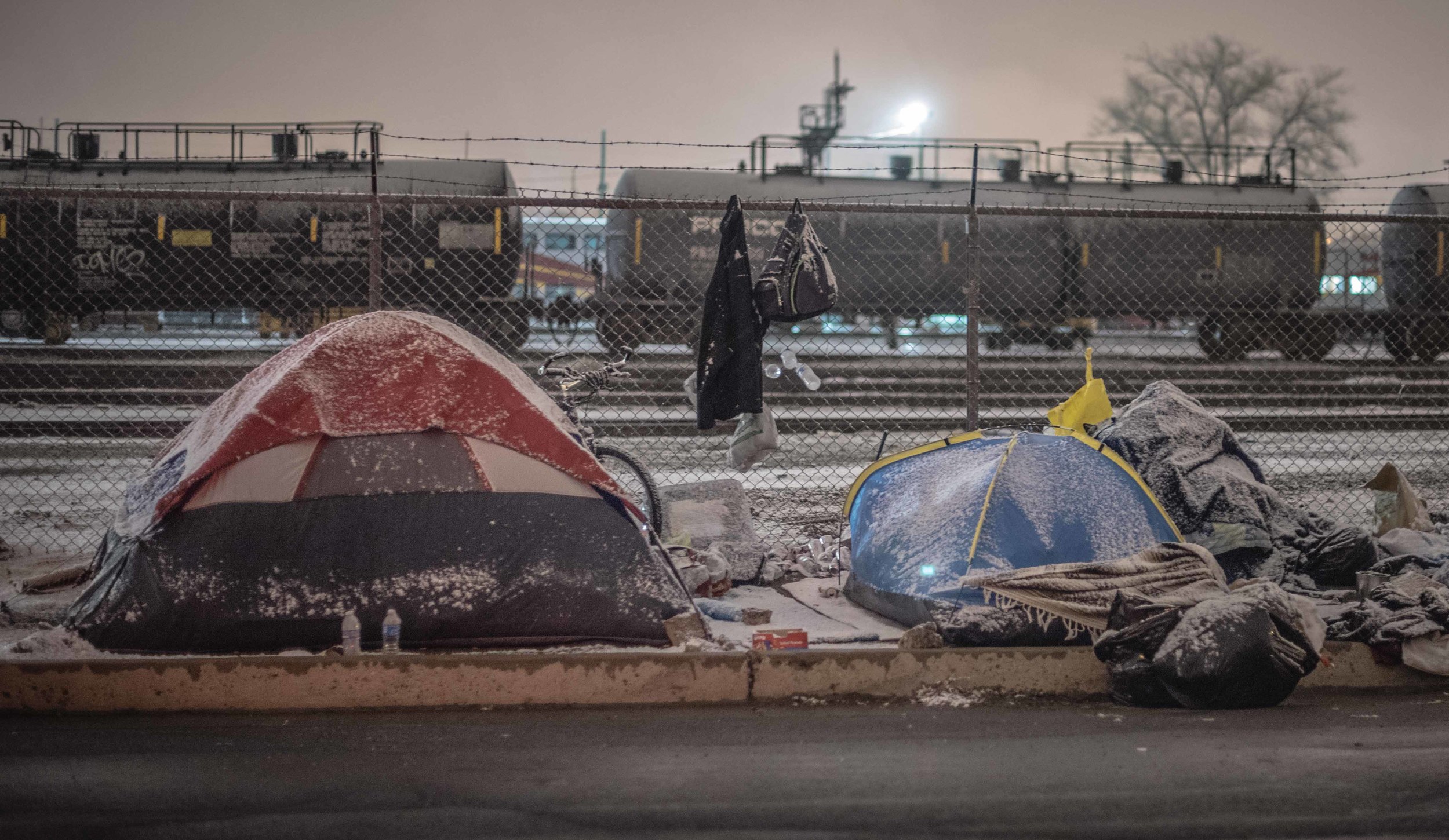

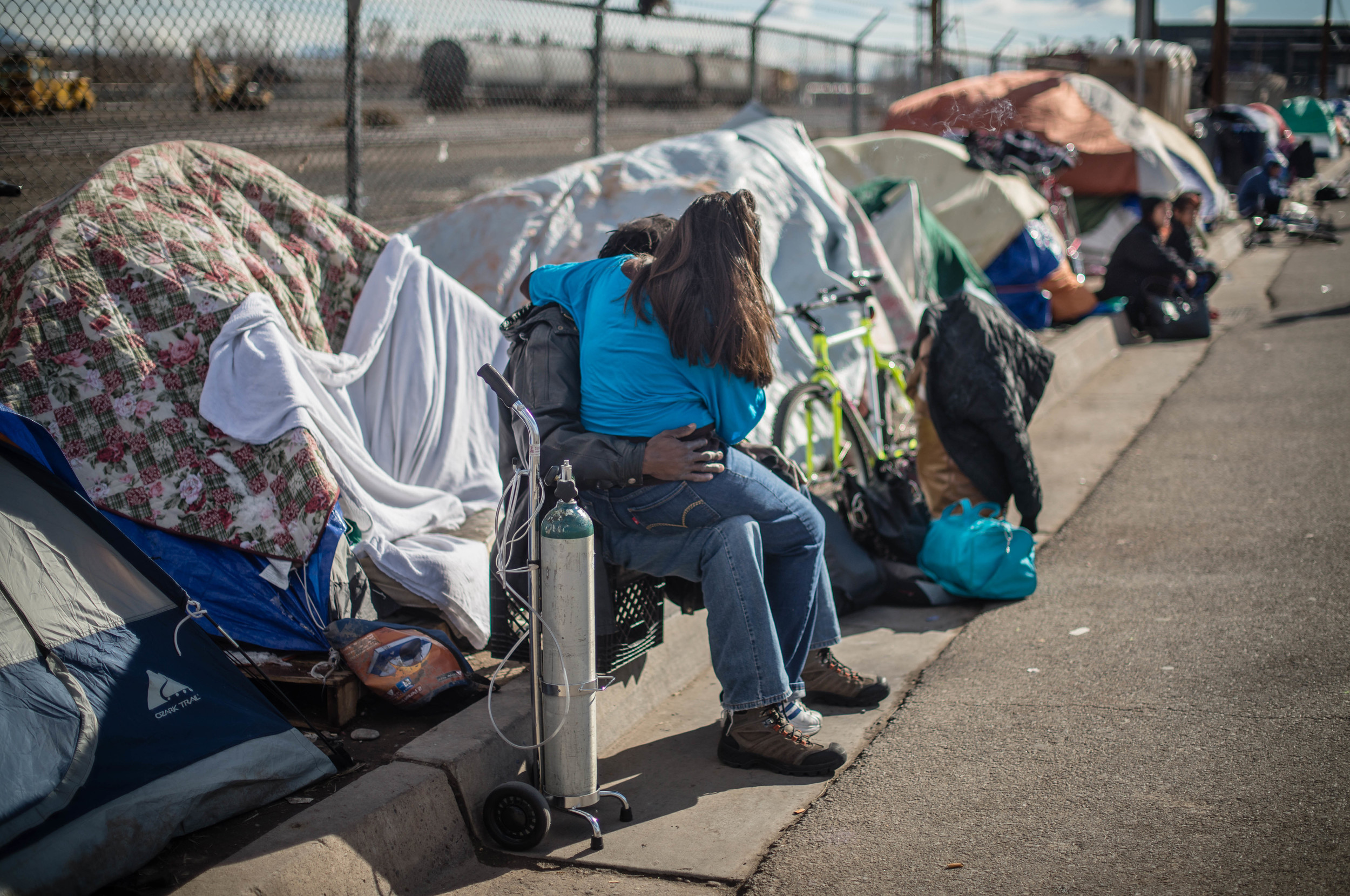
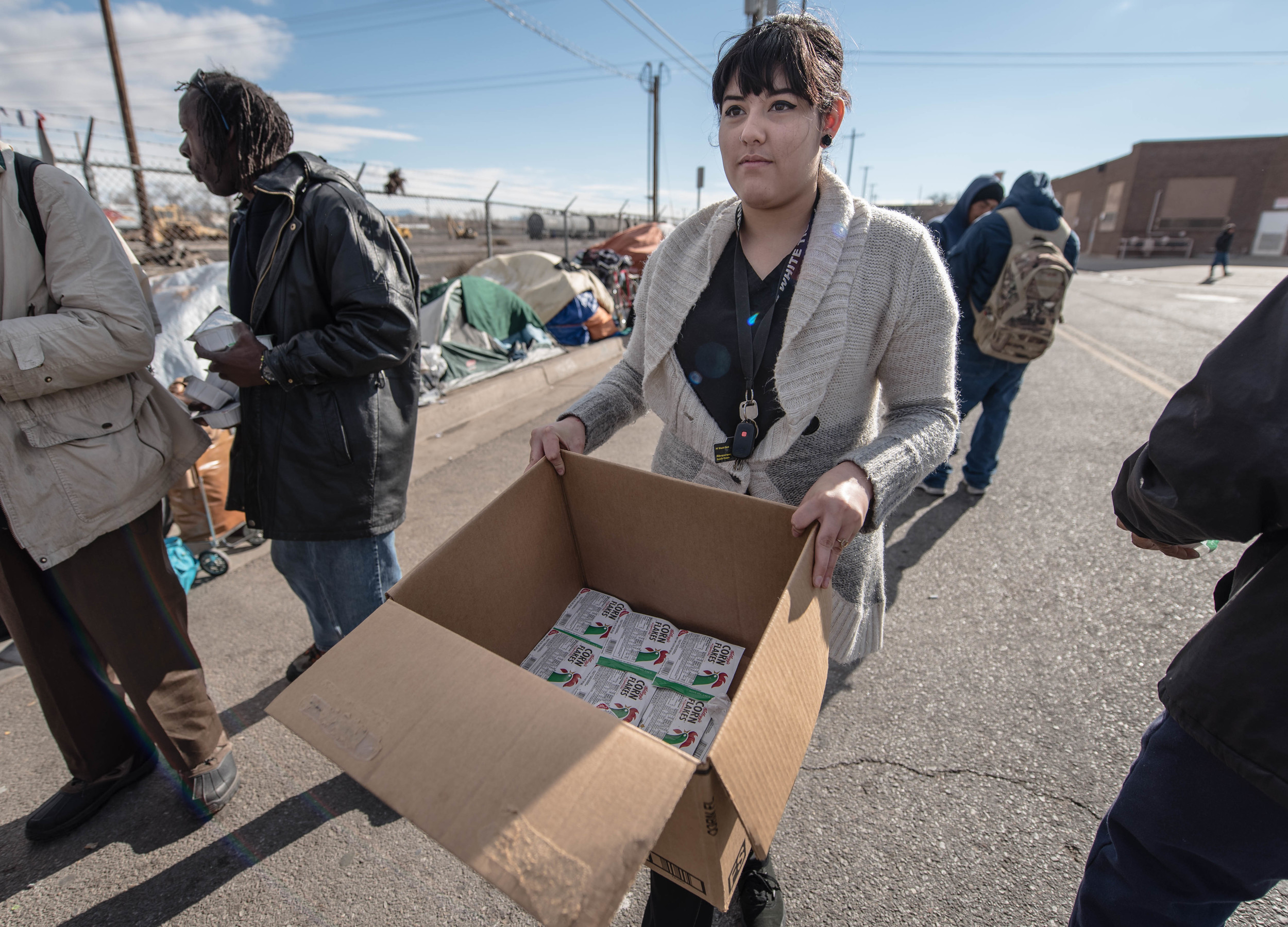
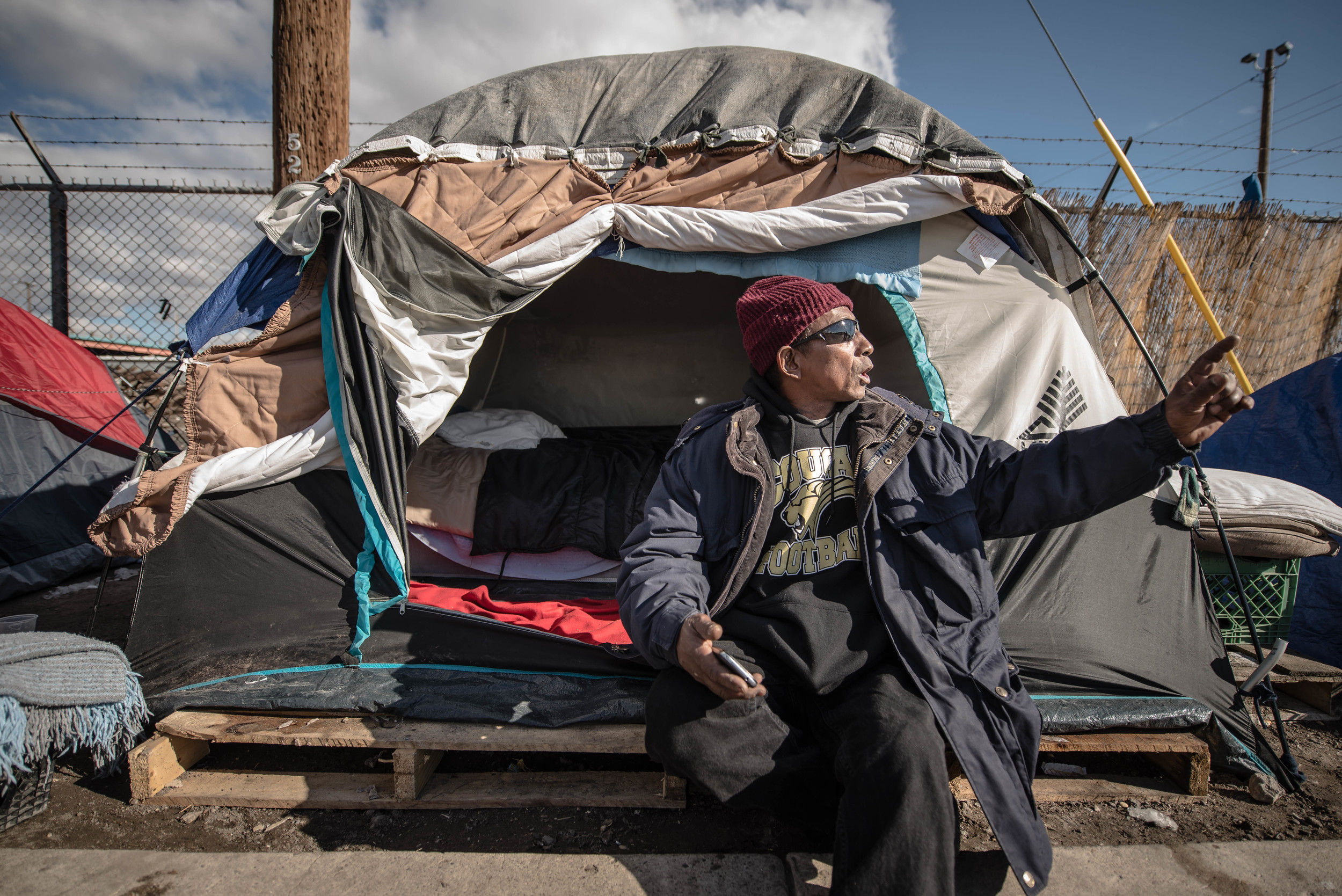
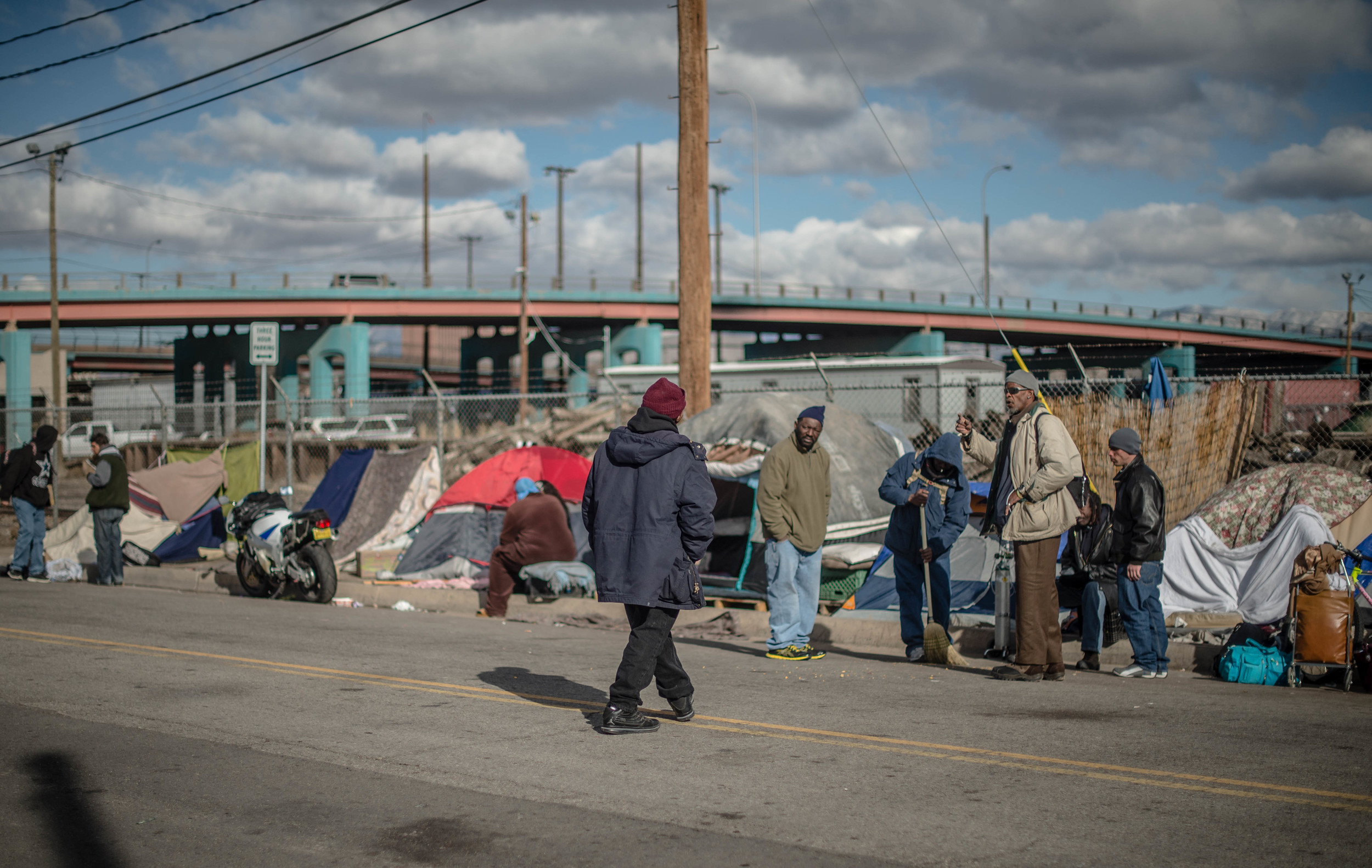
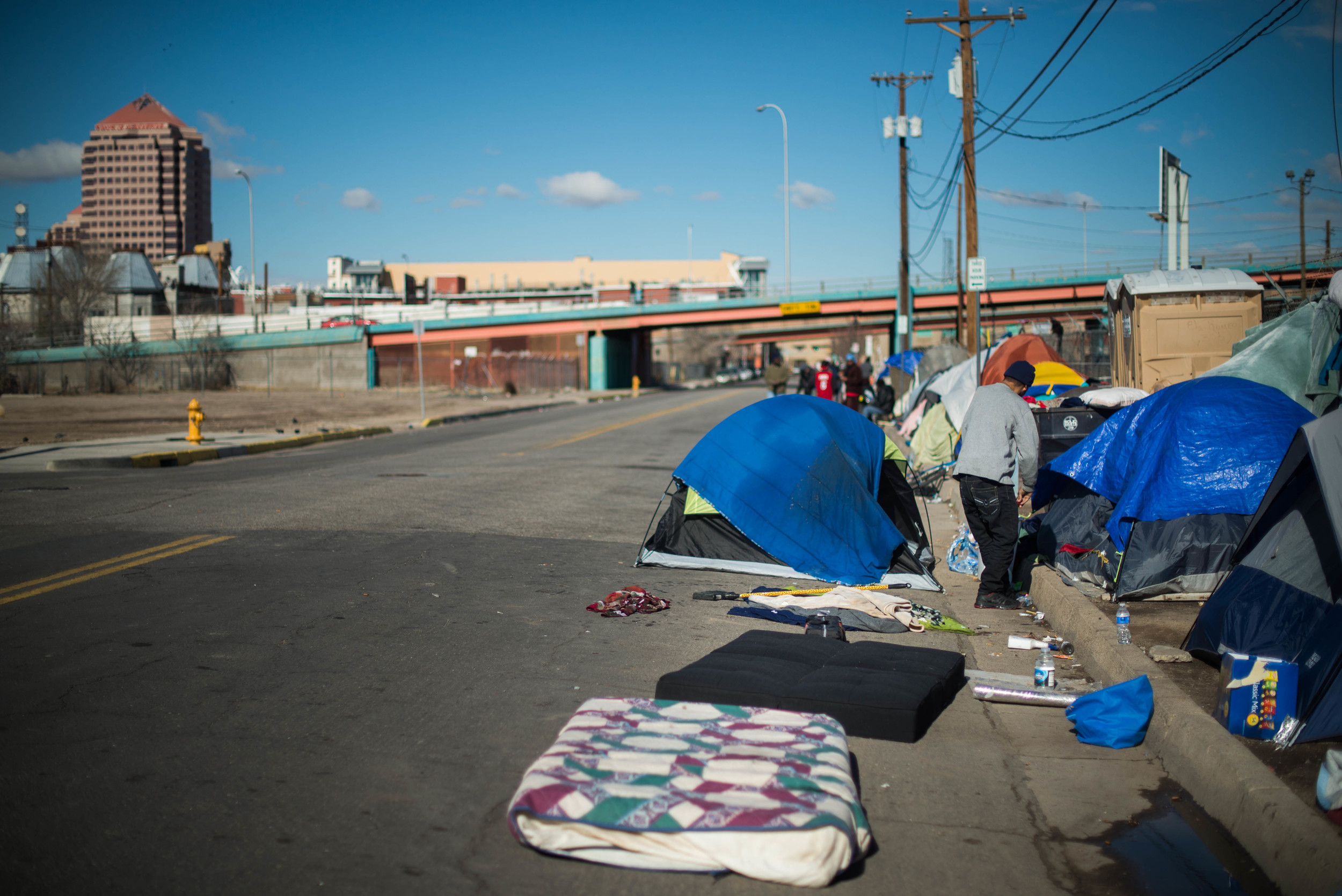
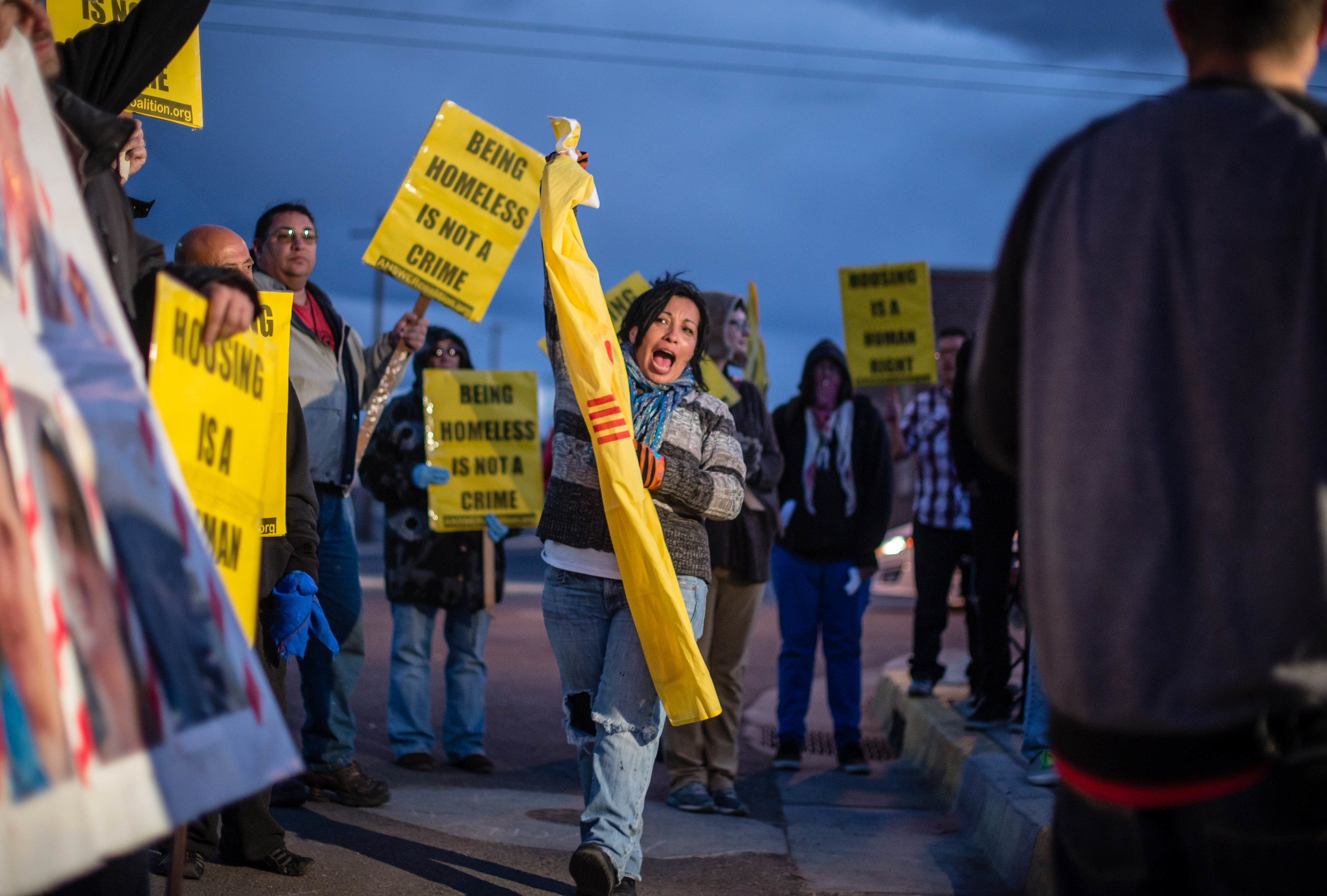
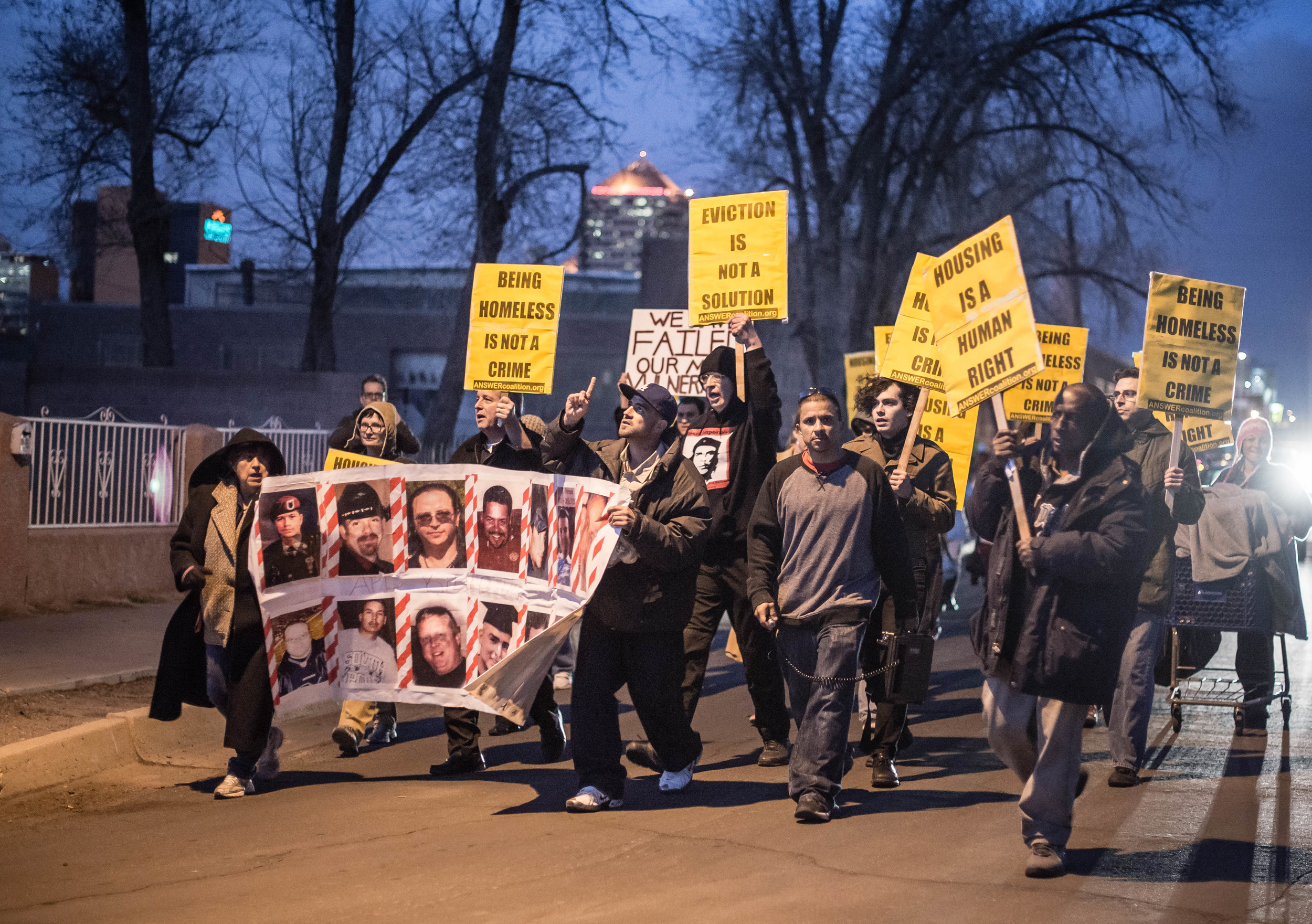
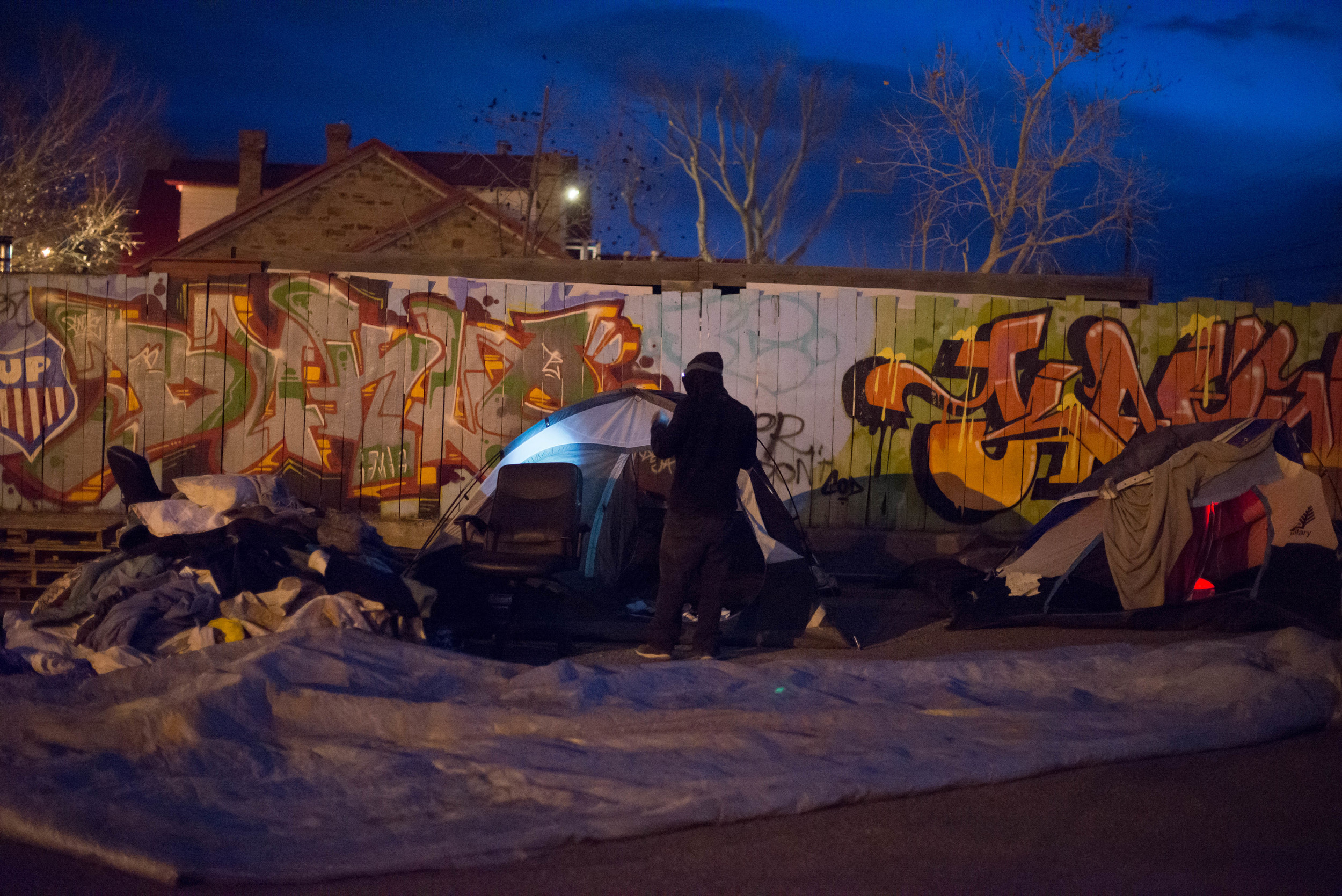
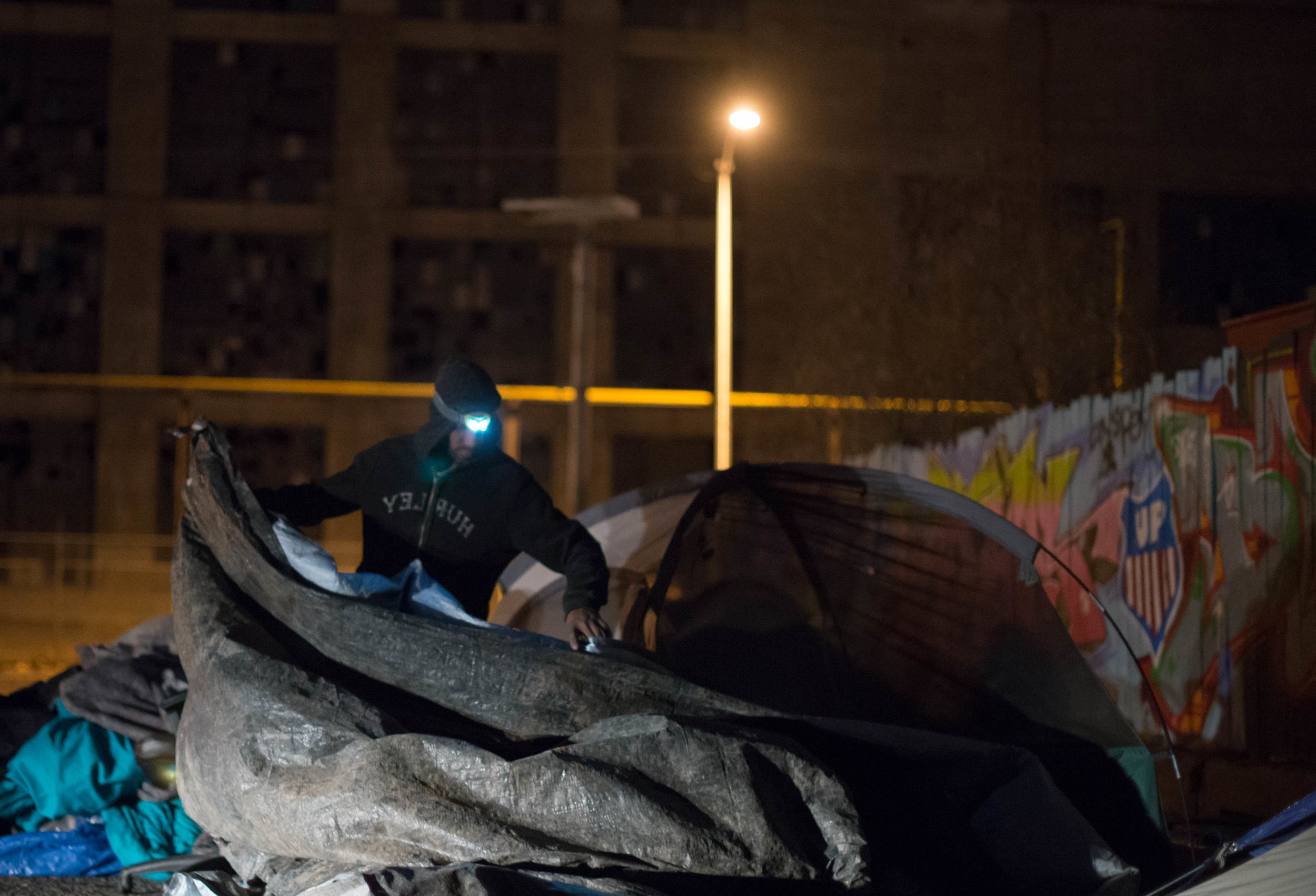
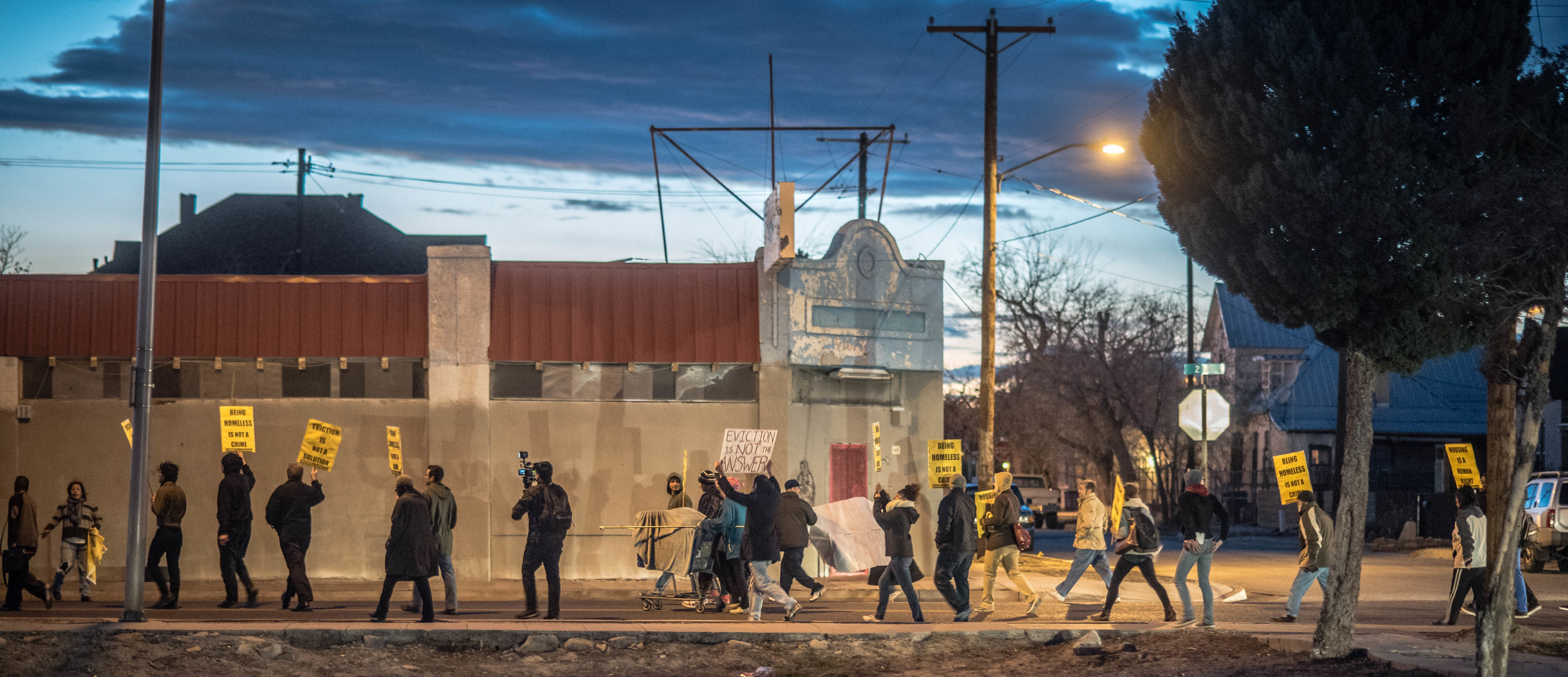
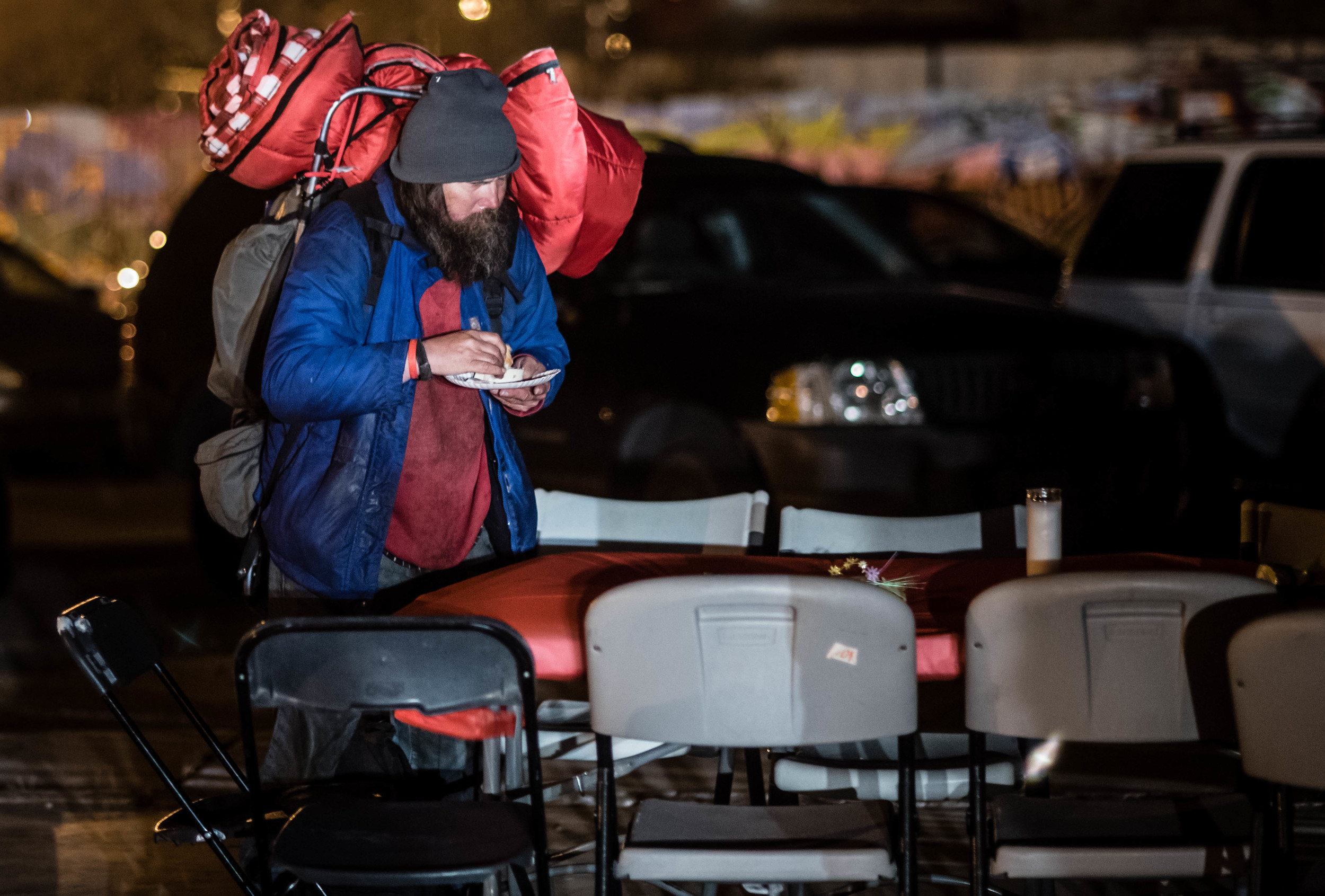
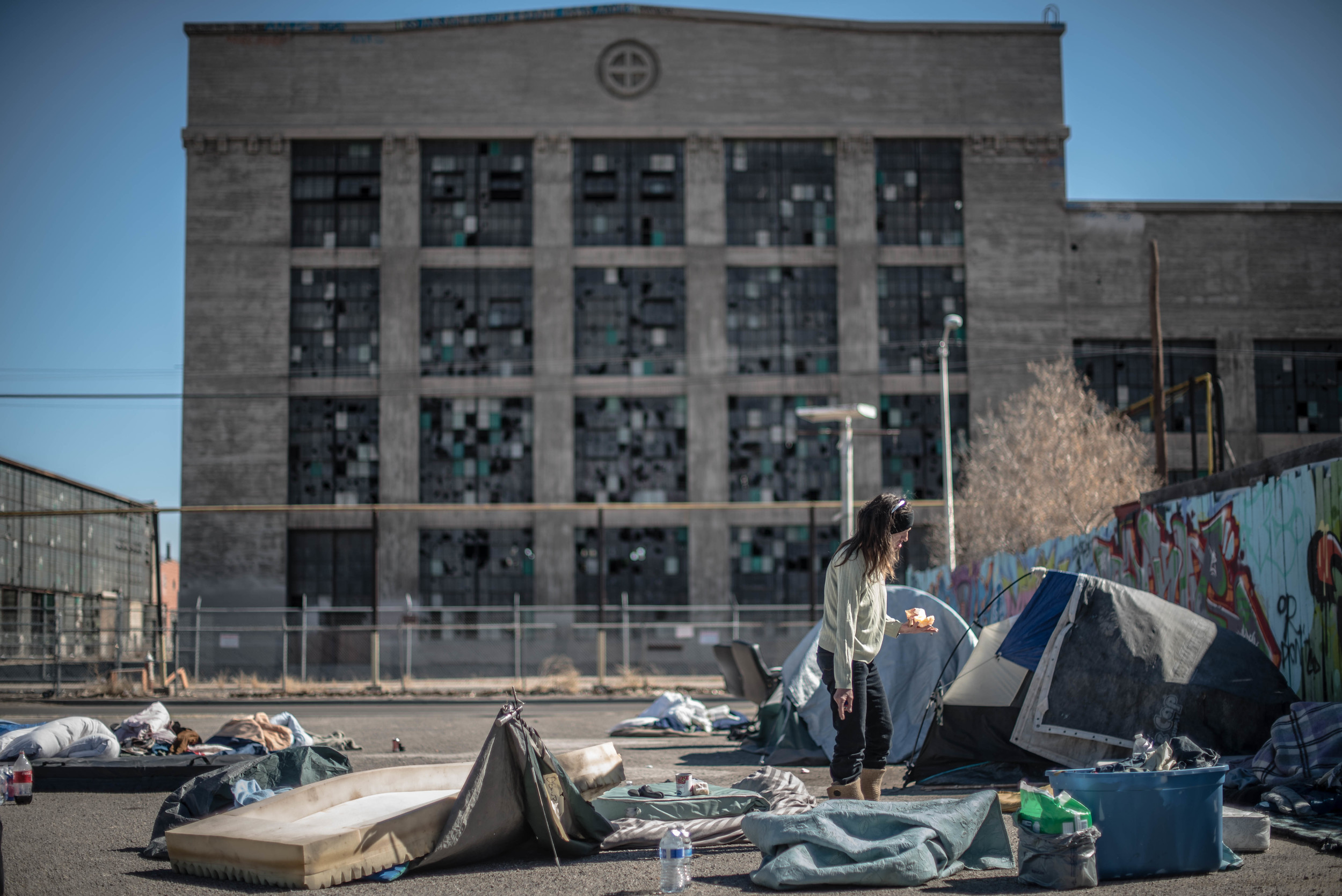
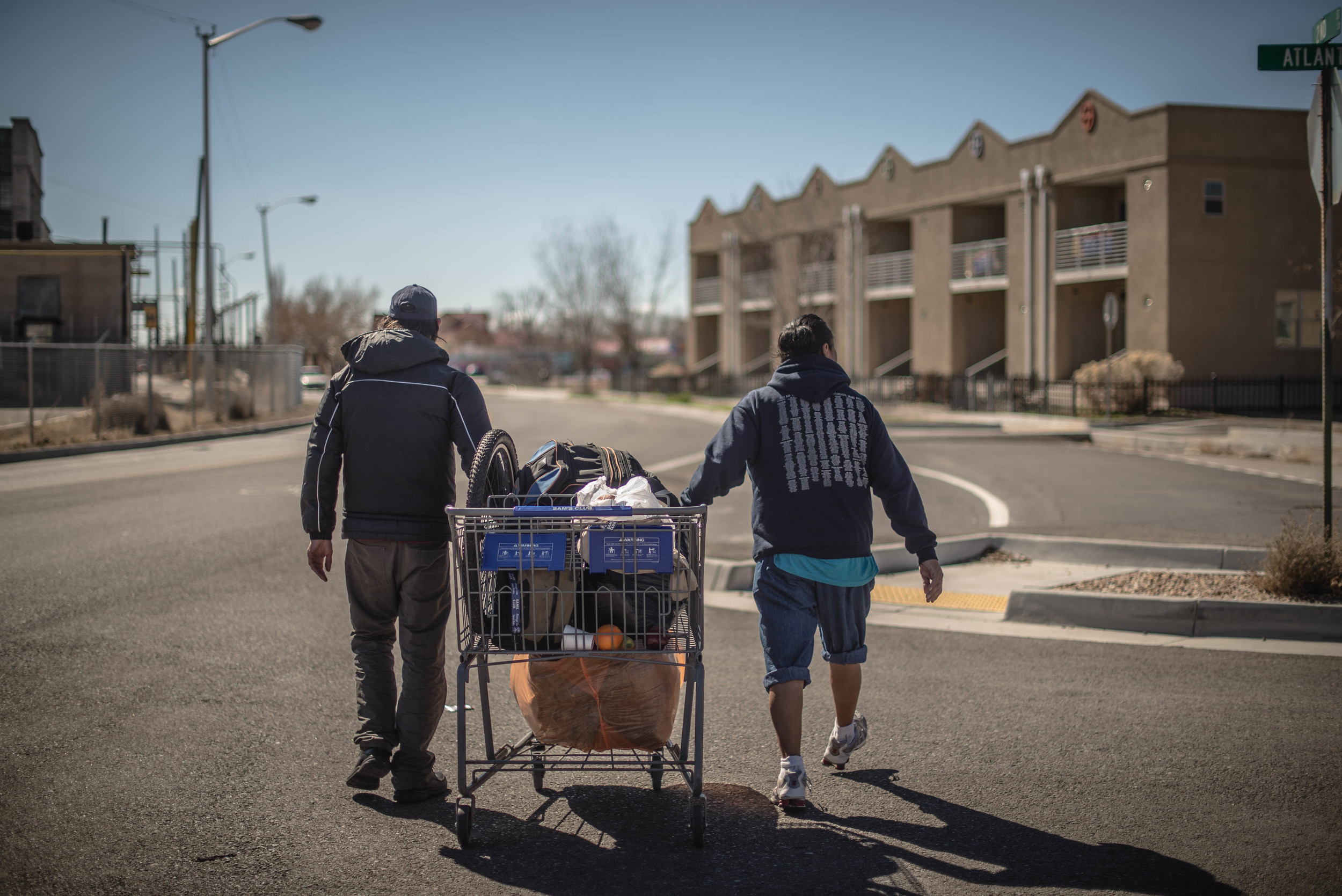
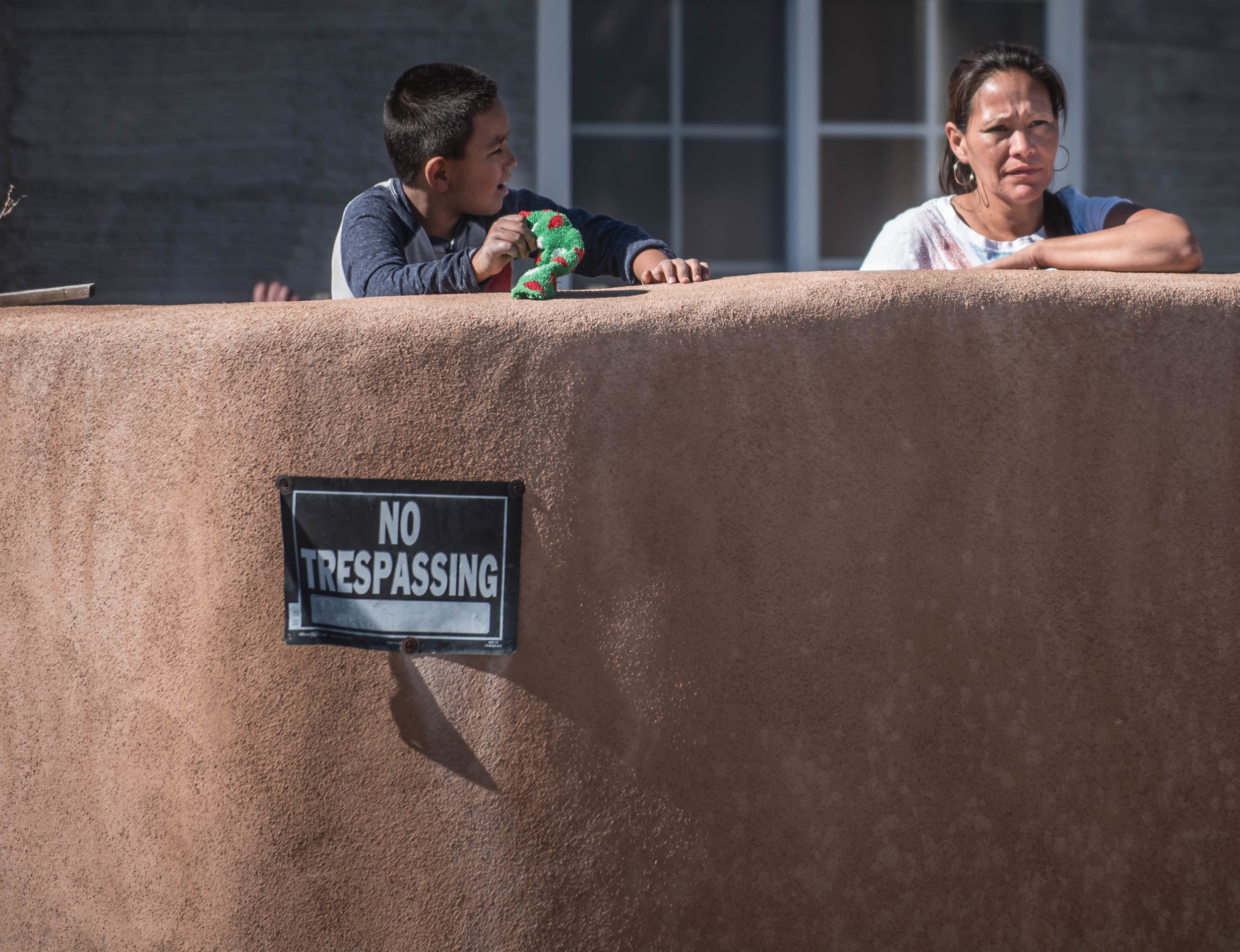
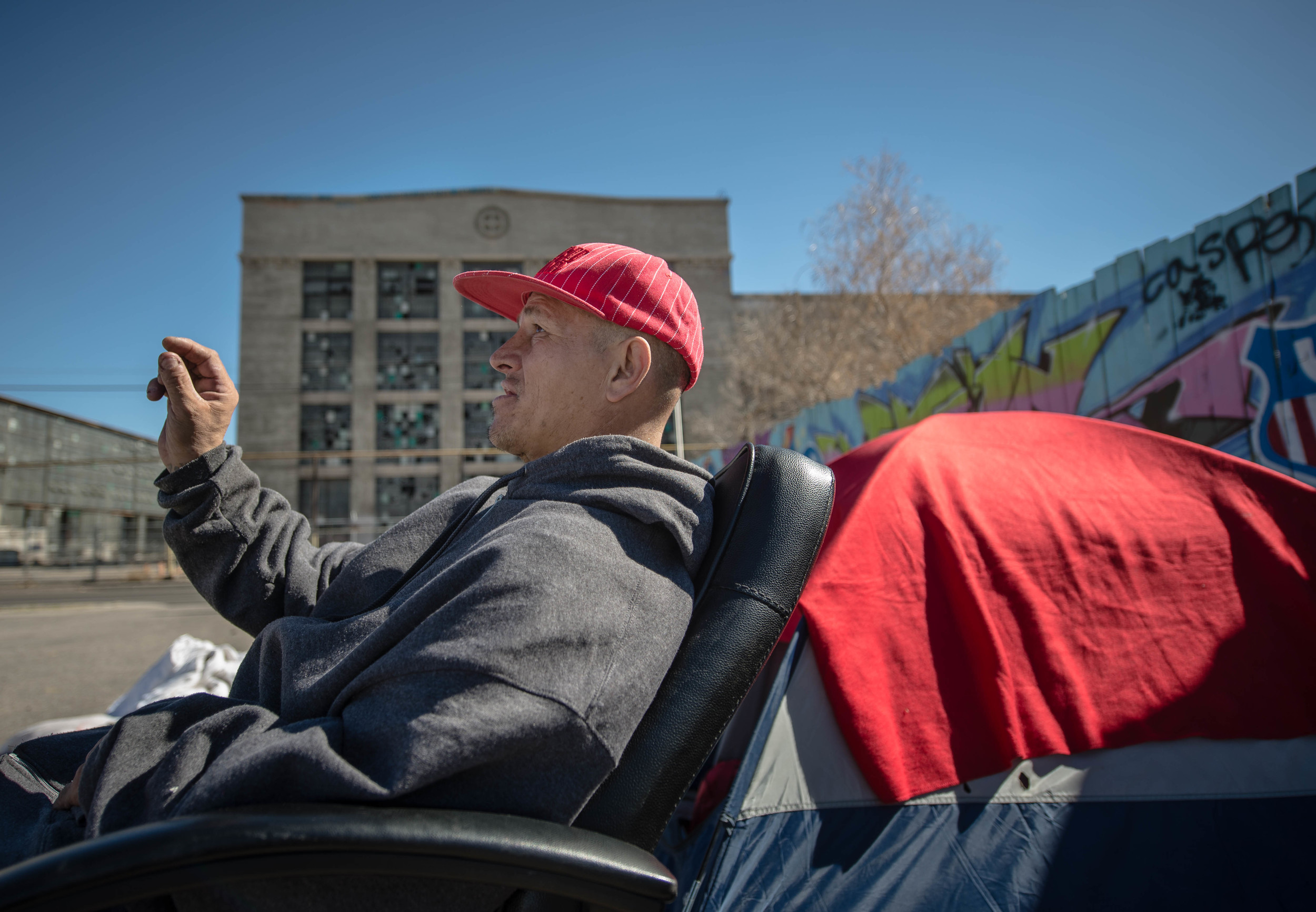
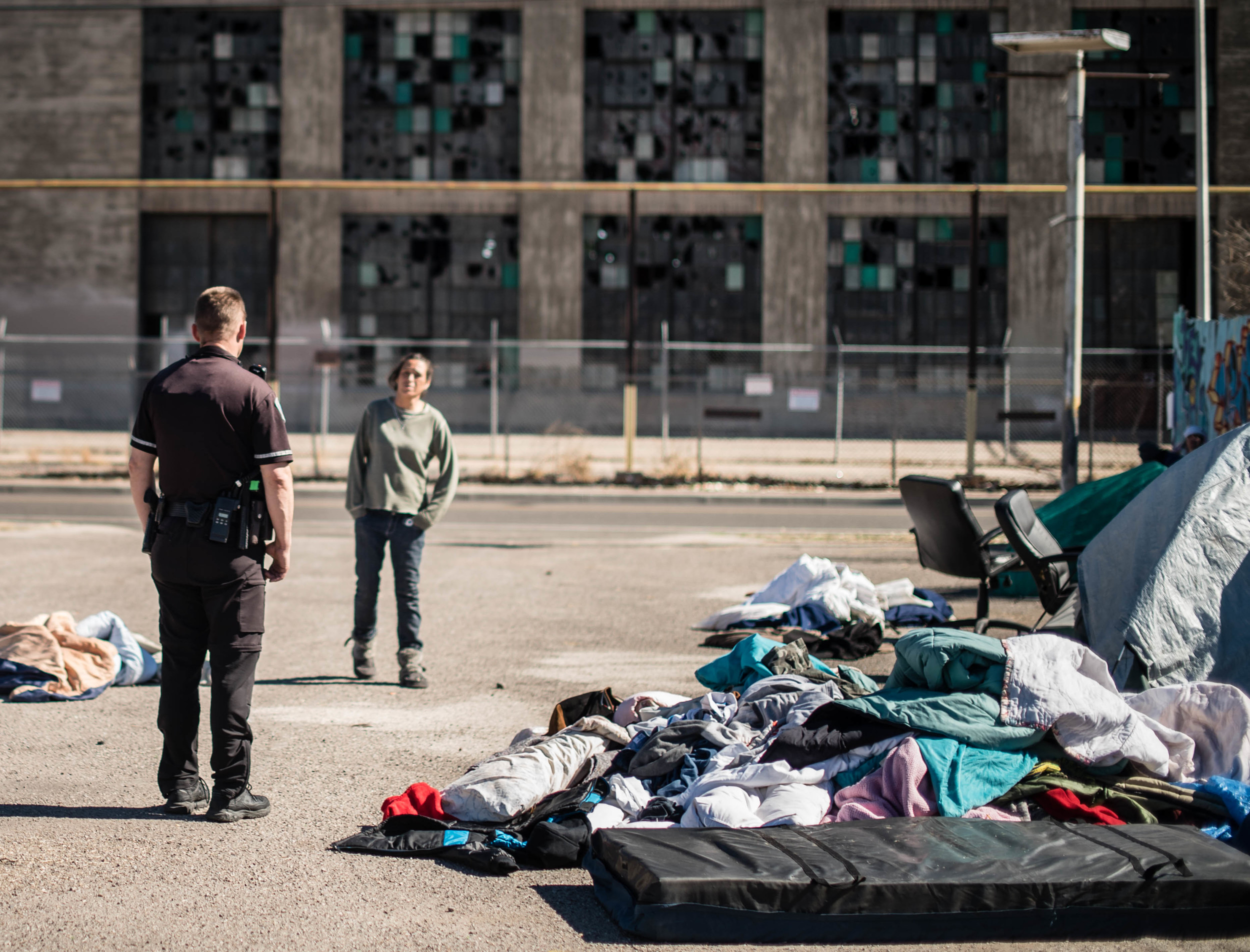
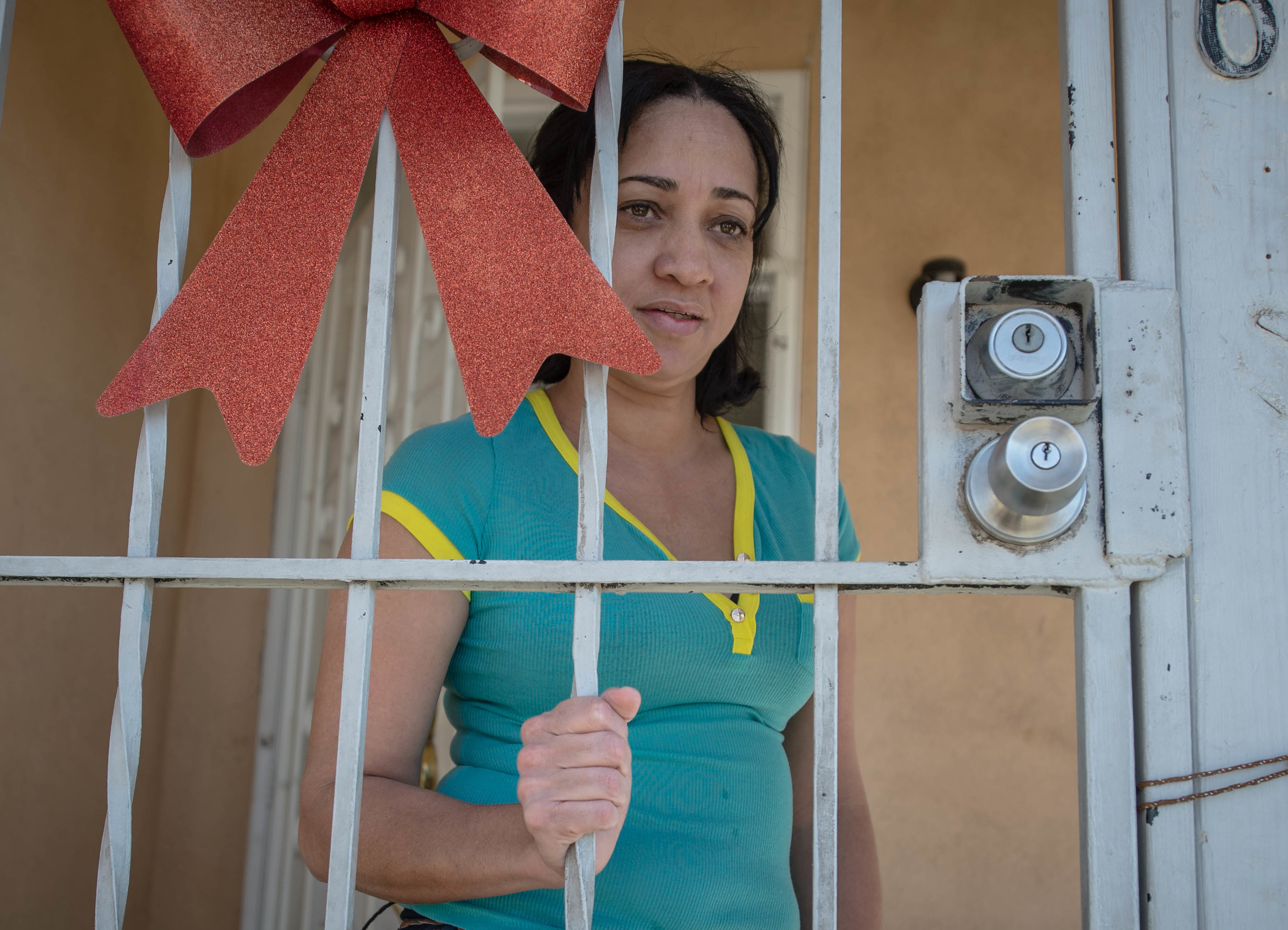
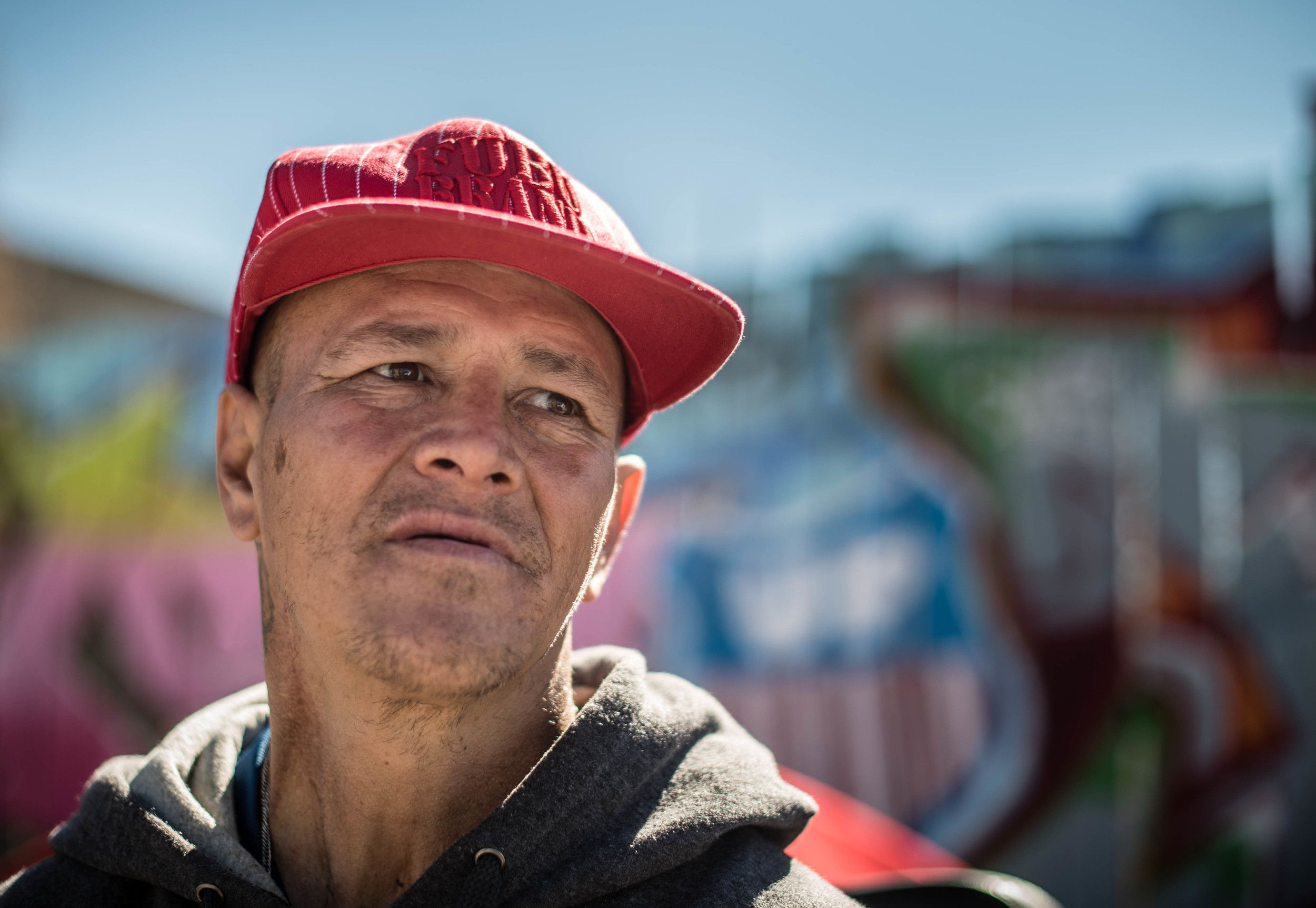
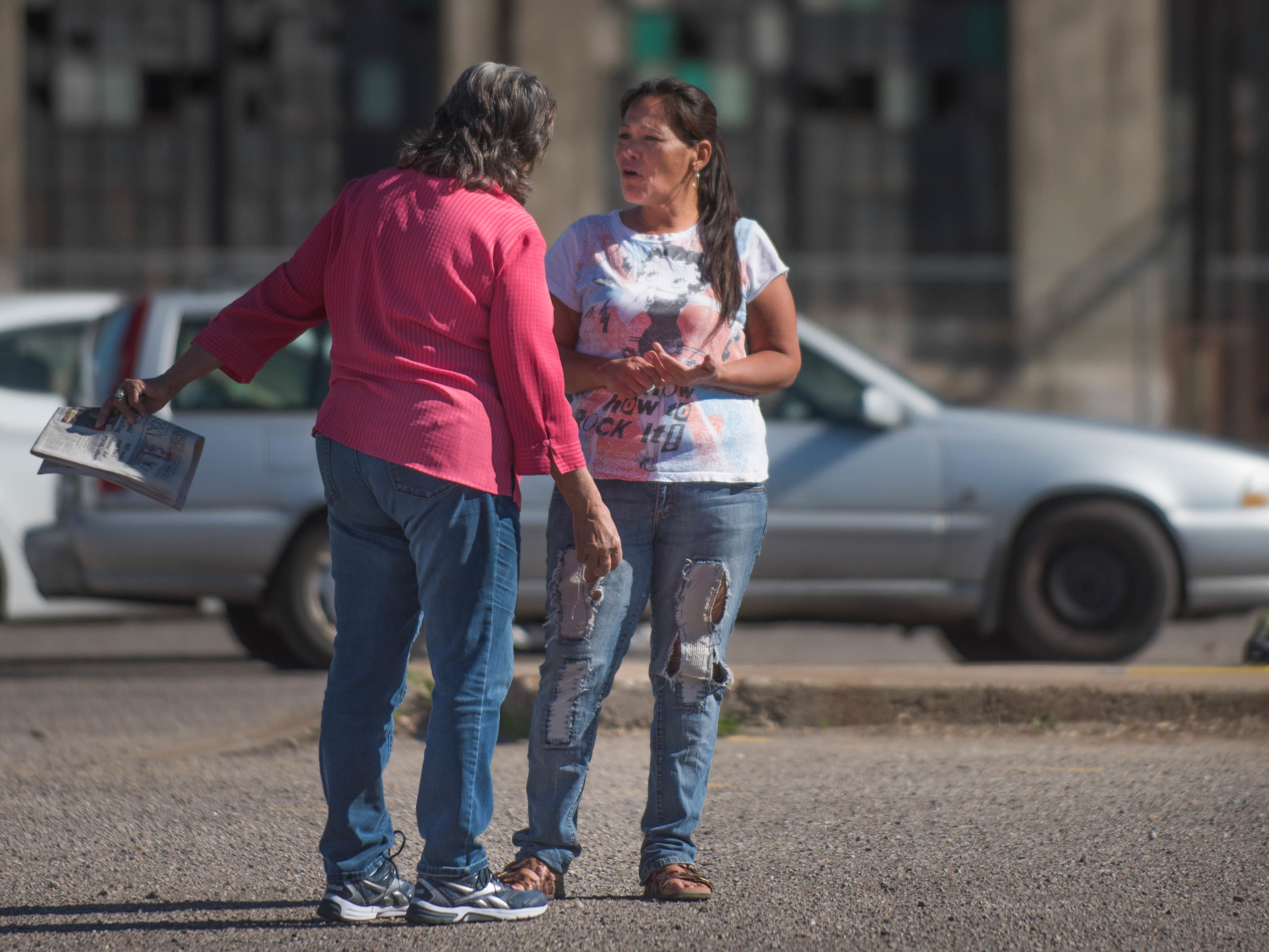
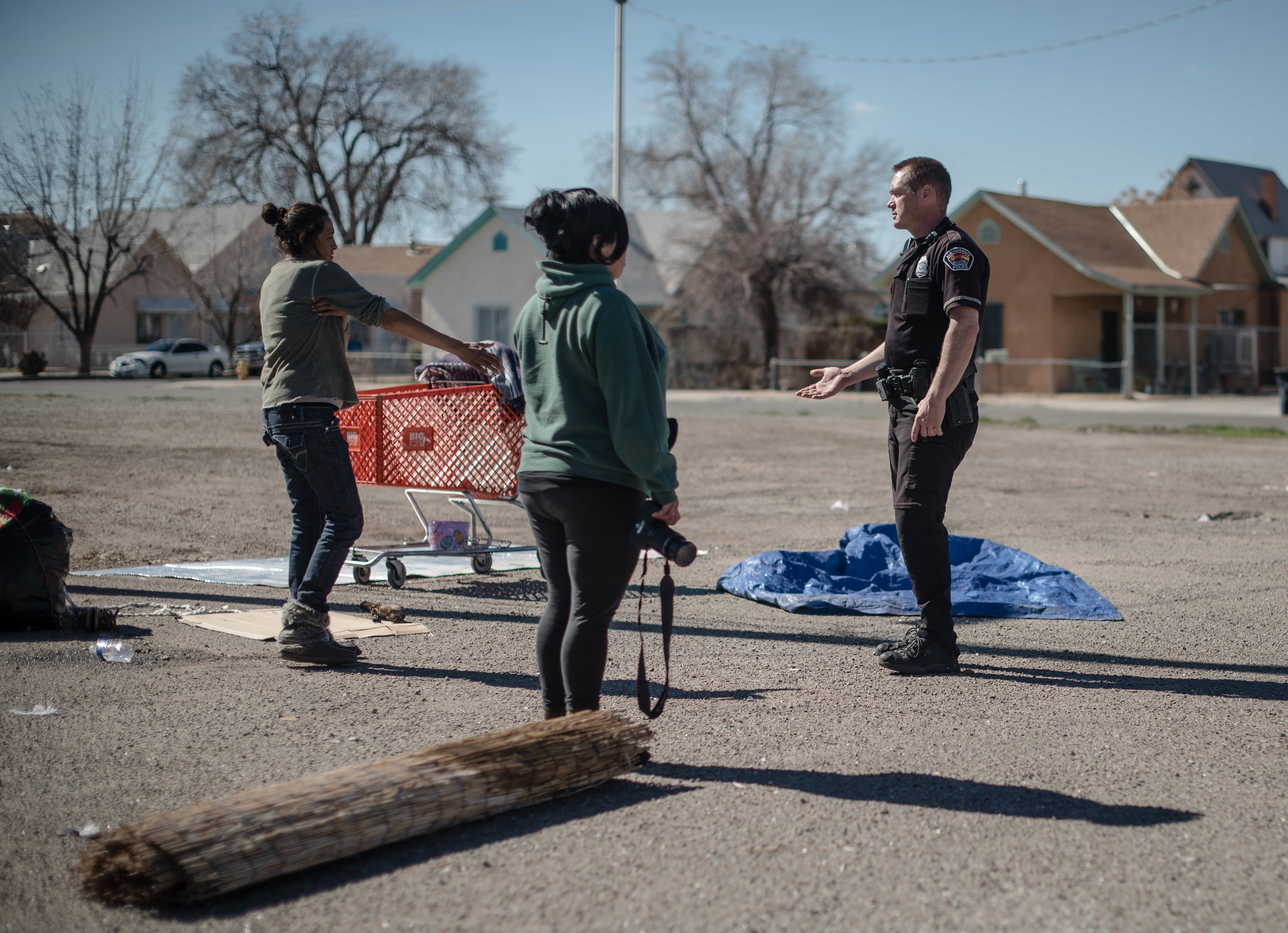
Story by Rick Nathanson of the Journal
Candy Sanchez is sweeping her “yard,” such as it is – a patch of dirt, still moist from the previous night’s snow that covered it – as well as her adjacent “home,” a small tent she shares with her disabled husband and pregnant sister.
Sanchez, 27, is a resident of what has become known as Tent City, a row of about 30 tents sitting on a narrow spit of land along First Street between Coal and Stover SW.
“I don’t like staying in the shelters,” she says. “I’ve had bad experiences there with bugs and people.”
Candy Sanchez hangs a wet blanket on a fence to dry on Thursday. Occupants of Tent City went to sleep the night before as freezing winds blew and snow fell. (Roberto E. Rosales/Albuquerque Journal)
Sanchez has stayed in the overnight winter shelter operating out of the old West Side jail, but that was more trouble than it was worth, she says.
“They get you up at 4 or 5 a.m. and drive you back Downtown by 6 a.m., so we wind up here out in the cold anyway. I might as well just stay in the tent and try to keep warm. It’s not that I prefer this, I just don’t know what else to do,” she says, her voice cracking and her eyes welling with tears.
As Albuquerque’s Tent City has swelled since it started this summer, so have complaints to police. Those living and doing business nearby report fighting, drug dealing, public drunkenness, prostitution, litter, and urination and defecation on neighboring properties.
Gilbert Montaño, the mayor’s chief of staff, said there have even been reports of human trafficking of drugged and unconscious women. Law enforcement officials have been investigating.
And beginning this week, the city will conduct a two-pronged sweep of the camp, with police officers removing those involved in criminal activity, while representatives of social service agencies and shelter operators offer to connect the homeless with a host of services and options, he said.
Unfortunately, there may not be that many takers.
The occupants of Tent City are a mixed bag and a tough crowd. Some say they simply value their independence and want to be left alone. Others claim to mistrust shelters, having been assaulted or threatened while there, or having had personal items stolen from them. A few say they resent sitting through prayers and religious services before getting a meal or a bed.
And more than a few freely admit that their use of alcohol or drugs has prevented them from entry, or has gotten them barred from shelters and meal sites.
“I got thrown out of the Rescue Mission,” says Ray Jones, 44. “They said I can’t drink there. That’s who I am. That’s all I do. I’m an alcoholic and I smoke cigarettes by the pack.”
Jones says he has been drinking steadily since getting out of prison in September, where he served 17 years for attempted murder and other crimes. Drinking, he says, settles him down so he stays out of trouble. He wants to keep it that way.
“I know I’m never going back to prison,” he says. “I’ve been institutionalized, and in a way I am still institutionalized.”
Now, however, his prison is alcohol, he says, “but it’s my choice this time.”
A couple has a brief moment of tenderness as they warm themselves in the sun in front of a tent that serves as their home. (Roberto E. Rosales/Albuquerque Journal)
Modest start
Tent City started modestly enough last summer with a few people spending nights in tents they pitched along Iron Street, diagonally across from the Albuquerque Rescue Mission at Iron and Second SW, says pastor Rene Palacios, executive director of the mission. The mission also operates the overnight November-March winter shelter at the old West Side jail.
In June, the driver of a pickup truck veered onto the sidewalk, possibly on purpose, according to police. One woman was killed and several other homeless people injured.
No longer feeling safe at that location, the campers moved east on Iron, setting up their encampments along First Street, just in front of the tall chain link and barbed wire fence that separates a thin swath of earth from the railroad yard behind it.
Most homeless people “want to be in permanent, affordable housing and want help and access to social services,” Palacios says. “But for some, nothing seems to work, and they will just stay outside of all the systems. But they are the exceptions.”
Tent City is full of those exceptions. Living in tents is probably “not doing more harm than good,” but neither is it “the solution,” he says.
Organizations that place chronically homeless people into housing and plug them into support services have found that it can be less expensive than allowing these individuals to remain on the streets, drifting in and out of shelters, using hospital emergency rooms when they become ill and often winding up in jail, Palacios says.
A few cities, like Las Cruces, have a city-sanctioned tent city, where social workers have access to the occupants and the tent city residents police themselves. While they have more freedom than at many shelters, no drugs or alcohol is allowed.
In those situations, a tent city can be seen as a transitional step to more permanent housing, Palacios says.
Not so for Albuquerque’s loosely knit assembly of campers.
“There is no real self-government and no municipal law or codes to provide structure,” he says. “While it could be transitional for some, it’s not likely to be so for most.”
Courtney Bell, who manages and lives in the Orpheum Arts Space, locks a gate at the perimeter of her lot, located a “stone’s throw” from Tent City. Bell pushed the city to provide portable toilets for the campers, so they would stop using the property around her building as a bathroom. (Roberto E. Rosales/Albuquerque Journal)
Out of control
Courtney Bell manages and lives in the historic Orpheum Arts Space, “a stone’s throw” from the growing Tent City. The Orpheum has about 20 apartments for artists, eight art studios, a large performance space and some private businesses.
She is sympathetic to the plight of the homeless, but she says the situation has gotten out of control. She recalls one evening while out walking, her dog was “chased into the street by a screaming man” from one of the tents. Another time, a friend was walking his dog when both he and the dog were attacked by a homeless person’s unleashed animal, resulting in sizeable veterinary and urgent care bills.
Residents of the Tent City have trespassed onto her property, leaving behind duffel bags, razors and blankets, as well as needles and syringes. The alleyway bordering the south side of her property was nicknamed “Bathroom Alley” by area police officers because of the numerous piles of human feces, she says.
That became an even bigger biohazard after it rained and the fecal-contaminated water ran onto her property, she says.
Bell began “incessantly” writing letters and emails to her city councilor, Isaac Benton, as well as other city officials, outlining the problems and dangers presented by the homeless tent occupants, says Bell’s lawyer and former Orpheum resident James Llewellyn Dodd.
Benton was able to get the city to provide two portable toilets at Tent City. The sanitation problem has since improved, but Bell and other area residents are still pushing to have full-time security stationed at the site, Dodd says.
Benton also confirms the reports of noise, drug dealing, prostitution and other problems and says he has driven to the site and witnessed some of that activity.
“There is no easy answer,” he says, noting that, according to city officials, there is an ordinance prohibiting access and obstruction of movement along a city sidewalk or right of way, but no law specifically preventing people from camping there.
“I have sponsored legislation to attack the problems of mental illness and substance abuse” pervasive among the homeless, “and I am working on legislation and funding for housing and support services,” Benton says. “I want to see these people in supportive housing and for there to be case management, but you can’t force them into these things.”
